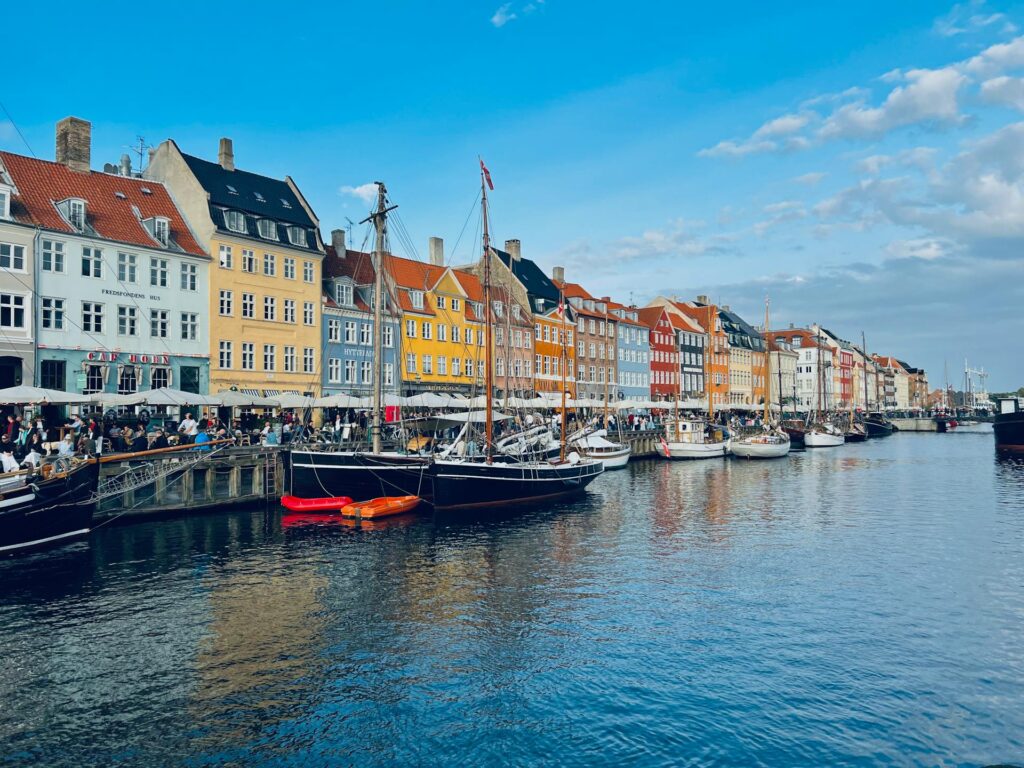Have you ever wondered how a city can be both stunning and sustainable? If you’ve ever strolled through Copenhagen, you’ve likely marveled at its breathtaking architecture and wondered how it manages to weave beauty so seamlessly with eco-friendly practices. The secret lies in its commitment to Copenhagen sustainable design, a philosophy that blends form and function in a way that respects the planet and pleases the eye. Let’s dive into how Copenhagen is setting a global benchmark for sustainable living.
The Rise of Copenhagen Sustainable Design
Copenhagen has become a beacon of sustainable design, transforming the way cities think about architecture and urban planning. For many years, cities have faced the challenge of balancing growth with environmental responsibility. Copenhagen, however, has mastered the art of this balance, making sustainable design an integral part of its urban fabric. By incorporating green roofs, solar panels, and energy-efficient systems into its buildings, the city not only reduces its carbon footprint but also enhances the quality of life for its residents. It’s a city where every piece of architecture seems to tell a story of harmony between nature and the built environment.
The emphasis on Copenhagen sustainable design extends beyond residential and commercial buildings. Public spaces and infrastructure are also designed with the environment in mind. From its extensive cycling paths to its efficient public transportation system, the city encourages sustainable living at every turn. Copenhagen’s commitment to sustainability is not just a trend but a deeply embedded culture that influences every design decision. It’s no wonder that urban planners and architects from around the world look to Copenhagen for inspiration.
Green Architecture: Building the Future
One of the most remarkable aspects of Copenhagen sustainable design is its innovative approach to green architecture. The city boasts an array of buildings that are not only energy-efficient but also visually captivating. Take the CopenHill power plant, for instance. This multi-functional facility is not just a waste-to-energy plant; it’s also a recreational space with a ski slope on its roof. Such designs exemplify how Copenhagen integrates functionality with beauty, creating spaces that serve multiple purposes while minimizing environmental impact.
In addition to large-scale projects, Copenhagen excels in smaller, community-focused initiatives. Residential complexes are designed with shared green spaces and community gardens, promoting a sense of togetherness among residents. These projects often incorporate recycled materials and smart technology to enhance energy efficiency. By prioritizing sustainability in both large and small projects, Copenhagen sets a precedent for how cities can grow responsibly while maintaining their aesthetic appeal.
Bicycle-Friendly City: Pedal Power
Copenhagen is renowned for its bicycle-friendly infrastructure, making cycling a preferred mode of transportation for many residents. The city’s extensive network of bike lanes and dedicated cycling bridges makes it easy and safe for people to commute by bike. This focus on cycling not only reduces traffic congestion and air pollution but also promotes a healthier lifestyle among the city’s inhabitants. It’s a testament to Copenhagen’s commitment to sustainable urban living.
The integration of cycling into Copenhagen’s urban planning is a key component of its sustainable design ethos. By prioritizing bike-friendly roads and facilities, the city has successfully reduced its reliance on cars, leading to a significant decrease in greenhouse gas emissions. Moreover, the city continually invests in its cycling infrastructure, ensuring that it remains accessible and efficient for all users. This dedication to sustainable transportation is a major reason why Copenhagen consistently ranks as one of the world’s most livable cities.
Renewable Energy: Powering a Green City
Copenhagen’s commitment to renewable energy is a cornerstone of its sustainable design strategy. The city aims to become carbon-neutral by 2025, and renewable energy plays a crucial role in achieving this goal. Wind power, in particular, is a significant contributor to the city’s energy mix, with numerous wind farms located both onshore and offshore. These renewable energy sources not only provide clean power but also reduce the city’s dependence on fossil fuels, setting an example for other cities to follow.
Beyond wind energy, Copenhagen also harnesses solar power and district heating systems to further reduce its carbon footprint. The city has implemented solar panels on many public and private buildings, while its district heating system efficiently distributes heat generated from renewable sources to homes and businesses. This holistic approach to energy management underscores Copenhagen’s dedication to sustainability and its role as a leader in green urban development.
Sustainable Urban Spaces: Parks and Gardens
Copenhagen’s urban planning includes an abundance of parks and gardens, providing residents and visitors with green spaces to relax and reconnect with nature. These sustainable urban spaces are thoughtfully designed to enhance biodiversity, support local ecosystems, and offer a respite from the hustle and bustle of city life. The city’s commitment to greenery is evident in projects like the Superkilen park, which incorporates elements from around the world to create a vibrant and inclusive public space.
The integration of green spaces into Copenhagen’s urban landscape is a testament to its dedication to sustainable design. These parks and gardens not only improve air quality but also contribute to the city’s overall aesthetic appeal. By prioritizing nature in urban planning, Copenhagen creates a harmonious balance between urban development and environmental preservation, serving as a model for cities worldwide.
Eco-Friendly Public Transport: Moving Sustainably
Copenhagen’s public transportation system is a shining example of eco-friendly mobility. The city’s efficient and reliable network of buses, trains, and metro lines encourages residents to opt for public transport over private cars. Many of these vehicles run on renewable energy, further reducing the city’s carbon emissions and supporting its sustainability goals. This commitment to sustainable transport is a vital component of Copenhagen’s overall design strategy.
In addition to providing environmentally friendly transport options, Copenhagen continually invests in improving its public transportation infrastructure. The city’s focus on accessibility and efficiency ensures that public transport remains a viable and attractive option for all residents. By prioritizing eco-friendly mobility, Copenhagen demonstrates how cities can effectively reduce their environmental impact while maintaining a high quality of life for their citizens.

Innovative Waste Management: Recycling and Beyond
Copenhagen’s approach to waste management is another key aspect of its sustainable design philosophy. The city has implemented comprehensive recycling programs that encourage residents to sort and recycle their waste. These efforts have significantly reduced the amount of waste sent to landfills, contributing to a cleaner and more sustainable urban environment. Copenhagen’s commitment to waste reduction goes beyond recycling, incorporating innovative technologies and practices that minimize waste and promote a circular economy.
The city’s waste-to-energy plants, like CopenHill, are a prime example of how Copenhagen turns waste into a resource. By converting waste into energy, these facilities provide clean power to homes and businesses while reducing the city’s reliance on fossil fuels. This innovative approach to waste management highlights Copenhagen’s dedication to sustainability and its ability to find creative solutions to environmental challenges.
Water Management: A City in Harmony with Nature
Copenhagen’s sustainable design extends to water management, with the city implementing innovative solutions to address flooding and water conservation. Climate change has increased the frequency and intensity of storms, making effective water management more crucial than ever. Copenhagen has risen to the challenge by developing green infrastructure, such as permeable surfaces and rainwater gardens, to absorb and manage stormwater naturally. These measures not only reduce the risk of flooding but also enhance the city’s resilience to climate change.
The city’s water management strategy also includes efforts to conserve and protect its water resources. Copenhagen has implemented measures to reduce water consumption and improve water quality, ensuring that its residents have access to clean and safe water. By prioritizing sustainable water management, Copenhagen demonstrates its commitment to environmental stewardship and its ability to adapt to the challenges of a changing climate.
Sustainable Housing: Living Green
Copenhagen’s commitment to sustainable design is evident in its housing developments, which prioritize energy efficiency, resource conservation, and eco-friendly materials. Many of the city’s residential buildings are designed to meet high environmental standards, incorporating features like solar panels, green roofs, and energy-efficient systems. These sustainable housing solutions not only reduce the environmental impact of urban living but also improve the quality of life for residents.
In addition to new developments, Copenhagen is also focused on retrofitting existing buildings to enhance their sustainability. By upgrading older structures with modern, eco-friendly technologies, the city is able to reduce its overall carbon footprint and promote a more sustainable urban environment. This commitment to sustainable housing highlights Copenhagen’s dedication to creating a city that is both beautiful and environmentally responsible.
Community Engagement: A Collective Effort
Copenhagen’s success in sustainable design is not solely the result of government initiatives; it also relies on the active participation of its residents. The city encourages community engagement through programs and initiatives that promote sustainable living practices. From community gardens to local environmental workshops, Copenhagen empowers its citizens to take an active role in shaping a more sustainable future.
This emphasis on community involvement is a key factor in Copenhagen’s success as a leader in sustainable design. By fostering a culture of environmental awareness and responsibility, the city ensures that its sustainability efforts are supported and strengthened by its residents. This collective effort demonstrates how cities can effectively engage their communities in the pursuit of a more sustainable and resilient future.
Education and Innovation: Nurturing Future Leaders
Copenhagen’s commitment to sustainable design extends to education and innovation, with the city investing in programs and institutions that foster a culture of sustainability. The city’s universities and research centers are at the forefront of developing new technologies and practices that support sustainable urban living. By nurturing future leaders in sustainability, Copenhagen ensures that its commitment to environmental responsibility will continue for generations to come.
The city’s emphasis on education and innovation is a testament to its forward-thinking approach to sustainable design. By prioritizing research and development, Copenhagen is able to continually improve its sustainability practices and remain a global leader in green urban development. This dedication to education and innovation highlights the city’s commitment to creating a better future for its residents and the planet.
Conclusion
Copenhagen’s approach to sustainable design is a model for cities worldwide, demonstrating how beauty and functionality can coexist in harmony with the environment. Through its innovative architecture, commitment to renewable energy, and emphasis on community engagement, Copenhagen sets a high standard for sustainable urban living. As cities around the globe seek to address the challenges of climate change and urbanization, they would do well to look to Copenhagen for inspiration. With its unwavering dedication to sustainability, Copenhagen is not just a city of the future; it’s a blueprint for a better world.

Recent Posts
15 Floor Plan Graphic Styles That Will Elevate Your Presentation Game
The Role of Shadows in Architectural Storytelling
When Furniture Becomes Architecture: Blurring the Line